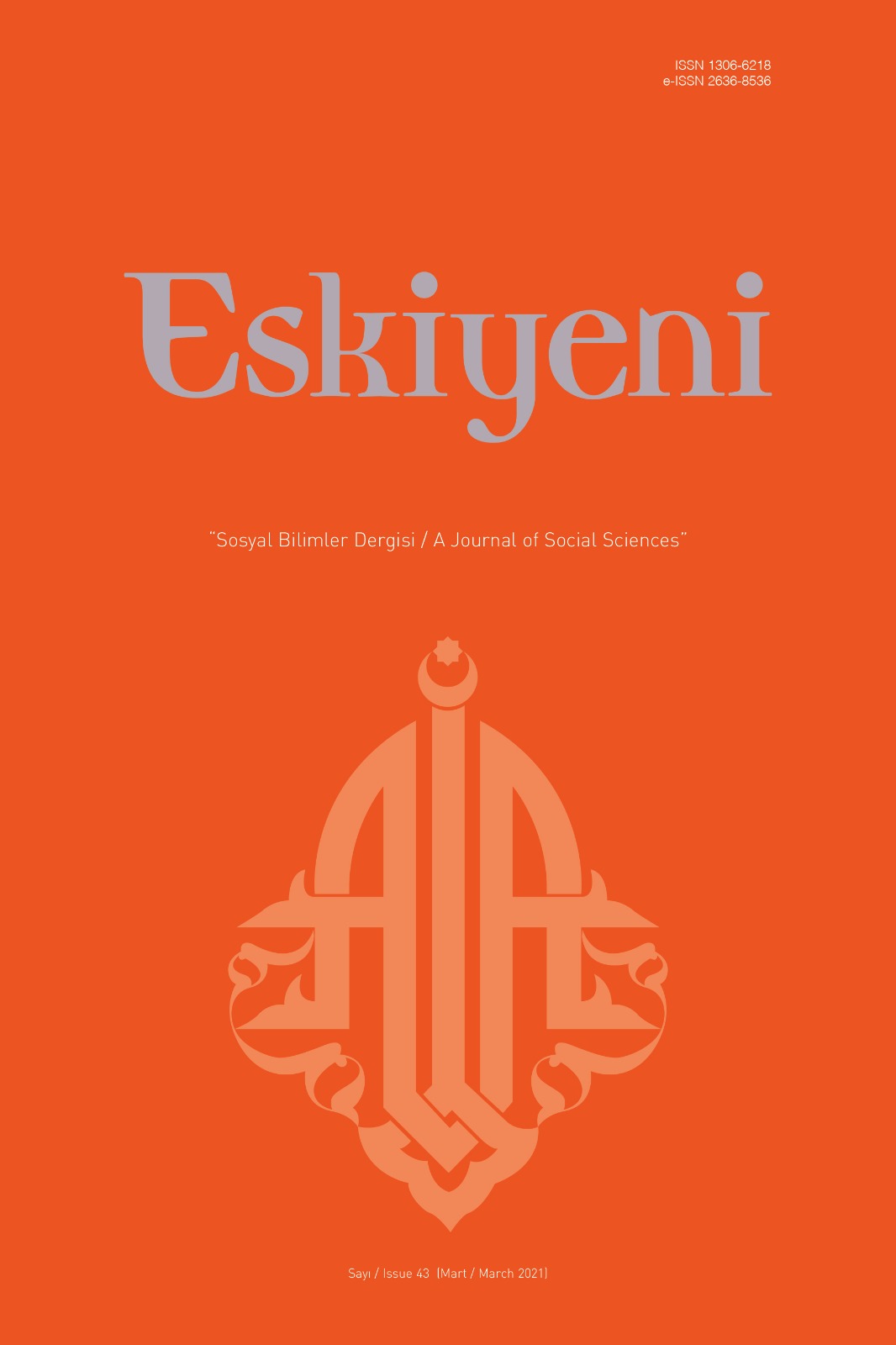İbnü’s-Salâh’a Nispet Edilen Müsnedü’l-Hâfız Osmân b. es-Salâh el-Eserî fîmâ verede mine’l-ehâdîs fî fazli’l-İskenderiyye ve ʿAskalân İsimli Eser Üze-rine Bir Değerlendirme
An Evaluation on the Work Titled Musnad al-Hāfiz Othmān b. al-Salāh al-Asar fīmā warada min al-ahādīs fī fadl al-Iskandariya va ʿAskalān Attributed to Ibn al-Salāh
Author(s): Hasan YerkazanSubject(s): Theology and Religion, Islam studies
Published by: Anadolu İlahiyat Akademisi
Keywords: Hadit; Ibn al-Salāh; Ribat; Alexandria; Askalān; Virtue of Cities;
Summary/Abstract: Ibn al-Salāh Shahrazûrī (d. 643/1245) had an important place in the history of hadith with his works and his students. In this article, the work named Musnad al-Hāfiz Othmân b. al-Salāh al-Asarī fīmā warada min al-Ahādīs fī fadl al-Iskandariya va ʿAskalān attributed to him has been examined and evaluated. This work is in the Berlin State Library. The book has twenty leaves and each leaf consists of fifteen lines. Although it is not certain, there is a case of belonging to Ibn al- Salāh. Because, apart from the cover, the name of Ibn al-Salah was not found in any part of the work, and a date record was not included. The narrations it contained in it, were delivered to him by the way of inscription. There is also no information that Ibn al-Salah gave these narrations to someone else, make them read or gave permission. In addition to the narrations about the virtue of Alexandria and Askalān, the hadiths about the values of being in ribat (ribāṭ) in the way of Allah were narrated in this work. Alexandria is located on the Mediterranean coast and is the second largest city in Egypt. Askalān, which is a Mediterranean city in the north of Gaza, is one of the leading cities of Palestine and is today under Israeli occupation. It is. These two cities, which are important centers of military, religious, scientific, commercial, and social activities, have been hosted many cultures and civilizations in the historical process. Ribât, means keeping watch across borders against enemy attacks, preparing for jihad, and trying to protect Islamic lands.In this work sixty-six narrations were reported. About half of the narrations are marfû’ (traceable) in terms of their source. The remaining narrations are mawqûf (untraceable) and maqtu’ (disconnected). In terms of content, most of the narrations are about the reward of being in the ribat and the virtue of Alexandria. It has been observed that the narrations about the value of doing ribat in the way of Allah are narrated in the primary hadith resources. The source of those concerning the virtue of Alexandria and the cities has not been determined. The content of the narrations that are not marfu’ is mainly about the virtue of the ribat and Alexandria. Even in the narrations about Alexandria, ribat was emphasized and in connection with this, it was stated that it was much more acceptable to have Ribat in this city. The number of narrators in the sanads (chain) varies between two and twelve. When viewed in terms of his first and last narrators, it is possible to say that these narrations were mainly reported by several narrators. In addition to this, although it is not the first and the last narrator, it is seen that some narrators such as Hānī b. Muwakkil are included in many narrations. The information that these people reported false narrations about Alexandria leads to the conclusion that the hadiths in this work are not valid and even fabricated. It can be said that the general narrations about ribat give the impression that they are associated with Alexandria just for the purpose of keeping and protecting the city. It is seen that such narrations, which were not found in the sources in the early periods, appeared later and took place in relatively late period works.According to the available data, the fact that someone who is an expert in the methodology, such as Ibn al-Salāh, has fabricated narrations in his work, and that there is no explanation or assessment of the validity of the hadiths, can be seen as a deficiency. However, it would also be a forced interpretation or intention reading to say that Ibn al-Salāh acted carelessly and negligently about fabricated hadiths. For, he obtained the narrations reported in this work through inscription and permission. In addition, there is no information stating that these narrations were transmitted through his students after him. In other words, the sequence of narrations ended with Ibn al-Salāh as far as it can be determined. Therefore, it is not possible to say that he allowed fabricated hadiths to become widespread and that he was not meticulous about this issue. On the occasion of this study, a work attributed to Ibn al-Salāh was examined in different dimensions and presented to the benefit of the world of science.
Journal: Eskiyeni
- Issue Year: 2021
- Issue No: 43
- Page Range: 55-76
- Page Count: 22
- Language: Turkish

